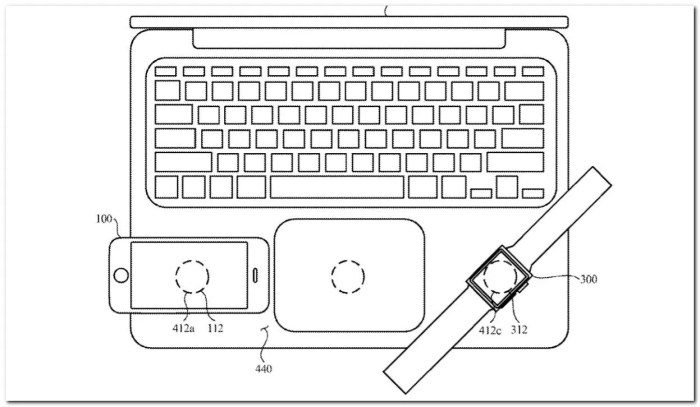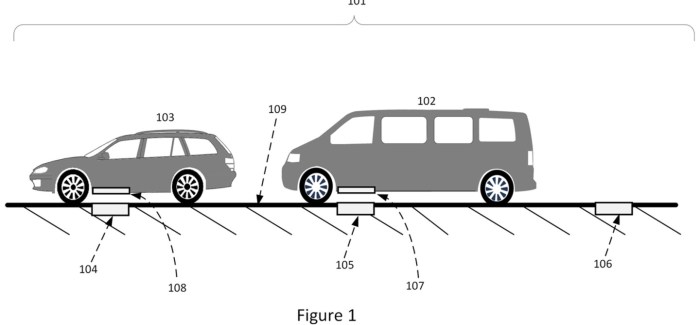Apple’s Wireless Charging History
Apple’s foray into the world of wireless charging has been a journey marked by both ambition and setbacks. The company has consistently aimed to redefine the charging experience, but its efforts have been met with challenges along the way. This journey provides valuable insights into Apple’s approach to technology and its evolving understanding of the wireless charging landscape.
The AirPower Saga
Apple’s initial foray into wireless charging was ambitious. The AirPower charging mat, announced in 2017 alongside the iPhone X, promised to charge multiple devices simultaneously, including iPhones, Apple Watches, and AirPods, all on a single surface. This vision was revolutionary, promising a truly clutter-free charging experience. However, the reality proved to be more complex.
- AirPower faced significant technical challenges, primarily related to heat management and power delivery. The complex design, aimed at charging multiple devices simultaneously, proved difficult to engineer effectively. The multiple coils required for multi-device charging created interference, leading to inconsistent charging and overheating issues.
- Apple struggled to overcome these challenges within a reasonable timeframe, and after years of development, the company ultimately canceled the project in 2019. The cancellation of AirPower was a significant setback for Apple, highlighting the complexities of wireless charging technology and the limitations of achieving true multi-device charging with existing standards.
The Rise of MagSafe
Despite the AirPower debacle, Apple remained committed to wireless charging. In 2020, the company introduced MagSafe, a new magnetic charging system designed for iPhones. MagSafe utilizes a ring of magnets embedded in the back of the iPhone, allowing for secure and precise alignment with MagSafe-compatible accessories, including chargers and cases.
- MagSafe offered several advantages over traditional Qi wireless charging. The magnetic connection ensured reliable and consistent charging, eliminating the need for precise alignment. MagSafe also enabled a wider range of accessories, including magnetic cases, wallets, and stands, further expanding its utility beyond simply charging.
- However, MagSafe also has limitations. It is a proprietary technology, meaning it is not compatible with other wireless charging standards like Qi. This restricts the use of MagSafe chargers to Apple devices, potentially limiting its adoption and accessibility.
Apple’s Current Wireless Charging Landscape
Apple has been a key player in the wireless charging revolution, steadily integrating the technology across its device lineup. From iPhones to AirPods and Apple Watch, Apple’s wireless charging capabilities have evolved, offering users a convenient and increasingly versatile charging experience.
Apple’s Wireless Charging Capabilities
Apple devices currently support various wireless charging technologies, catering to different needs and use cases.
- iPhone: iPhones starting with the iPhone 8 and iPhone X support Qi wireless charging. This standard allows users to charge their iPhones on compatible charging pads, offering a convenient alternative to wired charging. iPhones also feature MagSafe technology, which provides a secure magnetic connection for wireless charging and accessory attachment.
- AirPods: Apple’s AirPods, AirPods Pro, and AirPods Max all support Qi wireless charging through their charging cases. Users can conveniently place the case on a Qi-compatible charging pad for a wireless charging experience.
- Apple Watch: The Apple Watch series has supported wireless charging since its inception. Apple Watch models use a proprietary magnetic charging puck, providing a secure and efficient charging experience.
Comparison of Wireless Charging Standards
Apple’s wireless charging technology utilizes both Qi and MagSafe standards, offering distinct advantages.
- Qi: As the most widely adopted wireless charging standard, Qi offers compatibility with a vast range of devices and charging pads from various manufacturers. This widespread compatibility makes Qi a convenient choice for users seeking a universal charging solution.
- MagSafe: Apple’s proprietary MagSafe technology provides a magnetic connection for wireless charging and accessory attachment. This feature enhances charging efficiency and stability, preventing accidental disconnections. MagSafe also enables a range of accessories, including wallets, cases, and stands, expanding the functionality of Apple devices.
MagSafe’s Impact on Apple’s Ecosystem
MagSafe’s integration into Apple’s ecosystem has the potential to revolutionize wireless charging for accessories. The magnetic connection provides a secure and convenient way to attach and charge a wide range of accessories, including:
- MagSafe Wallet: A slim, magnetic wallet that attaches securely to the back of iPhone, allowing users to carry their essential cards without the need for a bulky case.
- MagSafe Charger: A compact, magnetic charger that provides a fast and efficient charging experience.
- MagSafe Battery Pack: A portable battery pack that magnetically attaches to the back of iPhone, providing extended battery life on the go.
MagSafe’s versatility and expanding ecosystem of accessories make it a promising technology for the future of wireless charging.
Apple’s Patent Portfolio for Wireless Charging
Apple has a vast patent portfolio related to wireless charging, showcasing its commitment to developing innovative and efficient charging technologies. These patents cover a wide range of aspects, from enhancing the charging experience to improving power management and safety.
Technologies and Functionalities
Apple’s patents cover a diverse array of technologies and functionalities related to wireless charging, aiming to improve efficiency, range, and user experience.
- Improved Coil Design: Apple has filed patents for innovative coil designs that optimize energy transfer and minimize heat generation. These designs aim to enhance charging efficiency and extend the lifespan of devices.
- Dynamic Coil Adjustment: Some patents explore dynamic coil adjustment, allowing for optimal alignment between the charging device and the charging pad. This feature would enable more efficient charging even when devices are not perfectly positioned.
- Multi-Device Charging: Apple has patented technologies for simultaneous charging of multiple devices using a single charging pad. This would allow users to charge multiple devices simultaneously, simplifying the charging process and reducing clutter.
- Long-Range Wireless Charging: Apple has filed patents for long-range wireless charging technology, which would allow devices to be charged wirelessly from a greater distance. This could revolutionize the way we charge our devices, enabling charging without the need for physical contact.
Key Patents Suggesting Future Direction
Several patents highlight Apple’s potential future direction in wireless charging, focusing on long-range charging, multi-device charging, and advanced power management.
- Long-Range Wireless Charging: Apple’s patents for long-range wireless charging suggest a vision for a future where devices can be charged wirelessly from a distance, potentially even across rooms. These patents describe technologies that utilize resonant coupling and advanced antenna design to enable charging over greater distances.
- Multi-Device Charging: Apple’s patents for multi-device charging indicate a focus on simplifying the charging experience by enabling simultaneous charging of multiple devices. These patents describe technologies that utilize intelligent power management and advanced coil design to optimize charging efficiency and prevent interference between devices.
- Advanced Power Management: Apple’s patents for advanced power management systems aim to optimize charging efficiency and extend battery life. These patents describe technologies that utilize intelligent algorithms to monitor battery health, adjust charging currents, and prevent overheating.
Potential Impact on the Wireless Charging Industry, Apple patent wireless charging plans
Apple’s extensive patent portfolio in wireless charging has the potential to significantly impact the industry, driving innovation and setting new standards for efficiency and convenience.
- Increased Innovation: Apple’s focus on research and development in wireless charging will likely inspire other companies to invest in this technology, leading to a more competitive and innovative landscape.
- Improved User Experience: Apple’s patents for features like long-range charging and multi-device charging could significantly improve the user experience, making wireless charging more convenient and user-friendly.
- New Standards: Apple’s patents could influence the development of new industry standards for wireless charging, promoting interoperability and compatibility across different devices and brands.
Future Directions for Apple’s Wireless Charging Plans: Apple Patent Wireless Charging Plans
Apple’s relentless pursuit of innovation extends to its wireless charging technology, with its patent portfolio hinting at a future where charging is seamless, efficient, and packed with new functionalities. By analyzing these patents, we can gain insights into Apple’s roadmap for wireless charging and anticipate the features that might shape the user experience in the coming years.
Implications of Recent Patent Filings
Apple’s recent patent filings for wireless charging reveal a focus on enhancing both the efficiency and versatility of the technology. These patents suggest that Apple is exploring ways to:
- Boost charging speeds: Apple is working on increasing the power output of its wireless charging systems, allowing for faster charging times. This could potentially lead to a future where charging a device wirelessly takes as little time as plugging it in.
- Expand charging range: Apple is researching ways to extend the range of wireless charging, enabling devices to charge from greater distances. This could potentially allow for charging scenarios where devices are not directly placed on a charging pad, such as charging a phone from a nearby table or a car from a parking spot.
- Improve charging efficiency: Apple is also investigating methods to minimize energy loss during wireless charging, leading to a more efficient transfer of power. This could potentially result in less heat generation and a longer battery life for devices.
Potential Future Features and Functionalities
Based on the details in Apple’s patent filings, we can speculate on some of the potential future features and functionalities that might be integrated into Apple’s wireless charging technology:
- Reverse wireless charging: Apple’s patents suggest the possibility of reverse wireless charging, allowing devices like iPhones to act as charging pads for other devices like AirPods or Apple Watches. This could potentially create a more convenient charging ecosystem, eliminating the need for separate charging accessories.
- Multi-device charging: Apple might introduce wireless charging systems capable of charging multiple devices simultaneously. This could potentially be a game-changer for families or individuals with multiple devices, simplifying the charging process.
- Integrated wireless charging: Apple could integrate wireless charging directly into its devices, eliminating the need for separate charging pads. This could potentially lead to a more streamlined and aesthetically pleasing design for devices.
Impact on User Experience and the Mobile Device Market
Apple’s advancements in wireless charging have the potential to significantly impact the user experience and the broader mobile device market.
- Enhanced user experience: Faster charging speeds, extended charging range, and increased efficiency can lead to a more convenient and user-friendly experience for consumers.
- Increased adoption of wireless charging: Apple’s innovations could drive the adoption of wireless charging across the mobile device market, leading to a more standardized and interconnected charging ecosystem.
- New product opportunities: Apple’s wireless charging advancements could create new product opportunities, such as wireless charging cases, furniture, and other accessories.
Apple patent wireless charging plans – Apple’s wireless charging journey has been a rollercoaster ride, but their relentless pursuit of innovation is evident. With a focus on seamless integration, long-range capabilities, and multi-device charging, Apple is poised to redefine wireless power for the modern world. Their patents suggest a future where devices charge effortlessly, and the power cord becomes a relic of the past.
Apple’s patent for wireless charging is definitely a game-changer, potentially revolutionizing how we power our devices. But while we’re waiting for that futuristic tech to hit the market, we’ve got some exciting news to look forward to – nintendo nx details early october. Who knows, maybe the new Nintendo console will even feature wireless charging! After all, Apple’s patent could inspire other tech giants to jump on the wireless bandwagon, making it a standard feature in the future.
 Standi Techno News
Standi Techno News

